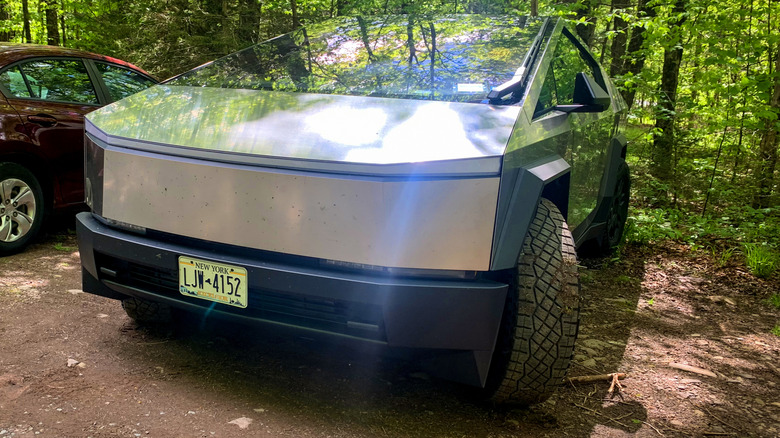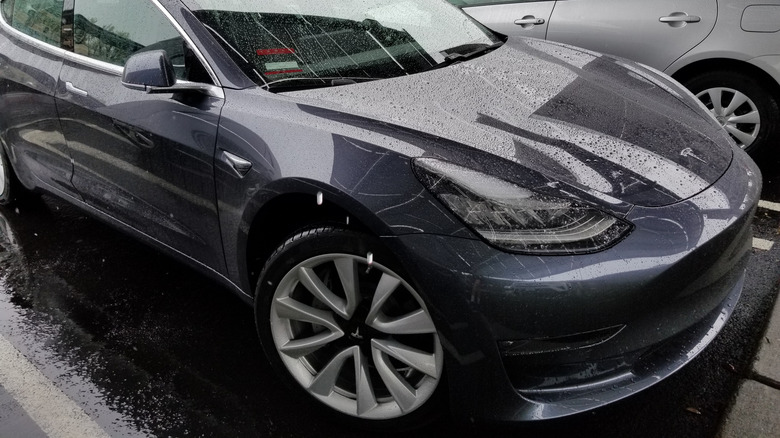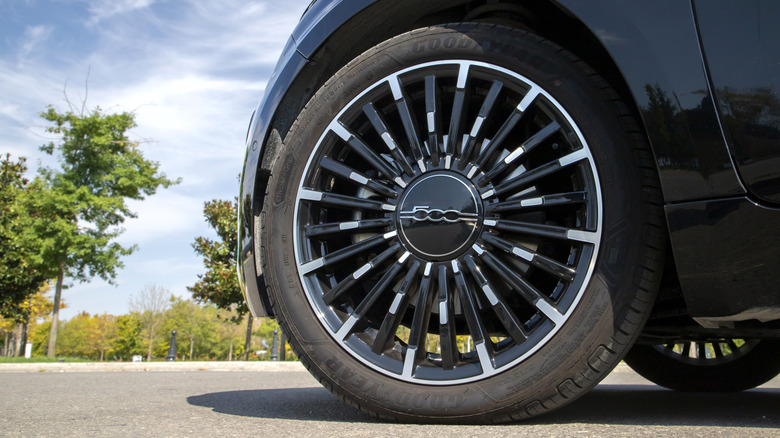Does Wheel Size Affect EV Range?
Electric cars have developed a reputation as a less fussy, low-maintenance alternative to gas-guzzling vehicles, and for good reasons. When buying EVs, the most important factor is the per-charge range, which is dependent on a whole bunch of vehicle-specific as well as environmental factors. Battery capacity, motor efficiency, net payload, regenerative braking, external temperature, terrain, and HVAC usage are some of the well-known factors that impact electric mileage. However, the type of wheel you choose for your electric car also plays a crucial role in determining the range output.
Now, it's not just the size, but also the tire weight and material that play a role here. Let's start with the weight situation. As BMW explains, the bulkier your EV's tires, the higher the power draw from the battery cells. As a result, the overall real-life mileage will come down. Continental, which supplies tires to 18 of the world's 20 largest EV brands, notes that weight plays a crucial role.
As the battery packs add to the car's weight, they put more pressure on the tires. And if you go with bigger and bulkier wheels, you are only adding to the problem that will ultimately take its toll on the range. To combat that, tires with lower rolling resistance are required, as they directly translate to better electric range. Moreover, bigger tires require more energy than usual to accelerate the vehicle and keep moving at high speed.
Why bigger wheels are a bad idea
According to BMW, there are broadly three ways in which larger wheels have a negative impact on range. First, they add to the overall weight, which then puts more strain on the engine in order to get the car moving. Second, wheels with a wider base end up requiring more energy to fuel their motion. Third, the increased rolling resistance of larger tires means the car spends more energy than usual to move the wheels into circular motion, especially at the start.
The biggest challenge, however, is rolling resistance. If you're unfamiliar with the concept, well, it refers to resistance faced by the tires as they try to roll on a surface. The higher the rolling resistance, the more energy is required to put them into motion. " Any vehicle with wheels will slow down over time when coasting unless some source of energy is supplied to offset the force-resisting motion created when a wheel rolls on a surface," explains Michelin. That surface friction, in turn, requires the car's engine to constantly compensate with extra energy.
So, can it be eliminated? Well, not entirely, but by mixing around the chemical compounds and carefully engineering the tread design, the rolling resistance can be reduced. The impact is tangible. Tires with low rolling resistance, such as Michelin's e·PRIMACY tire, offer a 7% boost in the net electric range, equivalent to approximately 18 miles for a car with an estimated range of 248 miles. Compared to rivals, the Primacy MXM4 touts a 25% lower rolling resistance.
A few other considerations
In addition to rolling resistance, there are several other factors where the size of tires affects the overall range. For example, the wheel's width changes the aerodynamic profile with respect to the air drag. So, let's say if one switches from 205mm to 305mm tires and travels a distance of 200 miles, the net energy required to move that distance from an aerodynamic perspective is merely 0.5 kWh, or 1.7 miles in lower driving range. But those are calculations based solely on a fixed set of conditions, so your experience might vary, as per Engineering Explained.
The diameter of the wheel also plays an important role. By just switching from an 18-inch to a 20-inch tire on a Tesla Model 3, the range difference comes in at roughly 15%. For the Model S, switching from 19-inch to 21-inch wheels reduces the range by 8%, while the Model X loses 9% of its net range when shifting from 20-inch to 22-inch tires. In a nutshell, if range is the prerequisite, then go with the smallest tire size possible for your electric car.
And while at it, you need to take care of a few other tire-specific aspects, as well. For example, low tire pressure increases rolling resistance, which in turn boosts energy uptake from the engine and reduces the overall per-charge range. And since air pressure also varies based on external temperature, you should ideally check the tire pressure on a monthly basis, at the very least.


